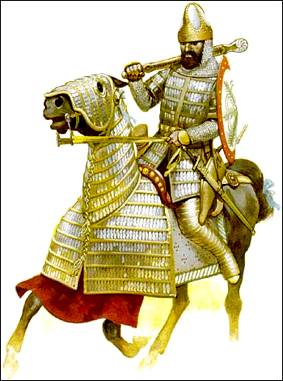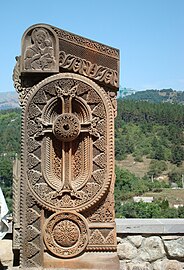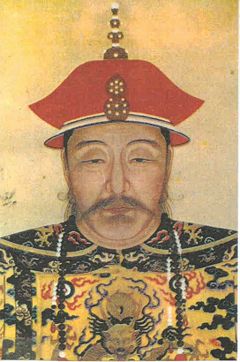clapyourhands
Prince
- Joined
- Jul 16, 2017
- Messages
- 422
The California Republic
Unique Ability: Gold Rush
Mines provide +0.5 housing. Other civilization's trade routes to California provide them with +2 Gold; California receives +10% population growth per each civilization sending a trade route to it, up to a maximum of 30%.
Unique Improvement: Long-Tom
Unlocks with Construction. Must be built next to a river. Provides +2 Gold. Also provides +1 Production for each adjacent mine.
Unique Unit: Forty-Niner
Replaces the Settler. Settling next to a mineable resource or river will claim all of its surrounding tiles, even those owned by foreign cities (if Mining has been researched, a mine will be built on the resource).
(Alternatively to the UU...
Unique Building: Saloon
Replaces the Arena. Does not provide base Amenities, but provides +1 Amenities for adjacent improved Wine, Tobacco, or Wheat resource.)
Unique Building: Forty-Niner
Leader: John Fremont
Leader Ability: Pathfinder
Reconnaissance units gain +1 Movement and can cross hills with no penalty. Gain points towards a governor title when a reconnaissance unit is promoted.
Agenda: Westward Ho!
Likes civilizations who explore and develop their territory with improvements. Dislikes civilizations who do not explore and leave land undeveloped.
________________________________________________________________
I decided to focus strictly on Gold Rush-era California, post-Bear Flag Revolt but pre-statehood. That does make "The California Republic" a bit of a misnomer, but so are "Indonesia" and "Germany". For this reason I stayed away from Mexican goverment-based units and infrastructure as well as the agricultural and cultural aspects of later California.
The crux of the playstyle I had in mind for California was to grow fast, but haphazardly and maybe a bit recklessly. One of the biggest problems of early Gold Rush "politics" (if you can call it that) was the mess of land rights after the Mexican-American War. People flooding to the west paid no heed to things like "property rights", for various reasons (Mexico had lost the war to America, so Mexicans also lost their land to Americans; Manifest Destiny; etc.) They settled where there was gold, period. The Forty-Niners didn't arrive at the start of the rush, but they're synonymous with it, and a land-stealing ability fit right in with the haphazard settling of Californian cities. Until the later years, such cities weren't even cities at all, really; just locales in places conveniently situated near gold where wooden shacks and tents could be erected. Obviously this will likely piss off the original land owners, but it fits with the theme: "mine now, figure out the rest later."
The civ ability provides housing from mines, which I thought would be very fitting; housing is the cap at which your population can comfortably live, and while the mines didn't provide more housing in that sense, they did encourage miners to lower their expectations of living conditions, drastically. This is the first half of California's population-growth oriented ability. The other plays off of the influx of immigration to the region by increasing population growth based on trade with other civilizations. To be the most accurate, this perhaps should have been based off of tourism, but tourism is such a late-game factor that population growth wouldn't be very useful by the time California had enough of it. With a boost to growth and to housing, California would be poised to rapidly increase in size; but again, it pushes to the side a few other important factors, namely food and amenities. Both of these were also severely lacking in Gold Rush life, with food prices being ridiculously inflated, and gambling and drinking being the main ways to obtain the latter. It's also important to note that this deficiency also translates to very low loyalty in California cities, however large or expansive they might be; the miners were never loyal to a nascent state-to-be, but only to gold and how to obtain it.
The saloon is an alternative to the Forty-Niner UU that does deal with the amenities issue in exchange for the land-grabbing ability. I wasn't sure which fit better--the UU ties in more with the haphazard settling at the start of the rush, while the UB ties in more with the gradual town development towards the middle and end of the rush. I'm leaning towards the UU since the playstyle would be more unique.
Fremont led a number of (somewhat reckless at times) expeditions westward and also was a major player in California politics as well. Given the strength of California's other uniques, I thought this one could be simpler and more easily tunable; faster Scouts help find more places to settle, especially in hilly areas, and the government title progress can be easily tuned so that it isn't excessive.
Overall, California is meant to grow big and grow fast, but also struggle at odds with its own size due to food shortages, lack of amenities, and disloyalty. It is encouraged to grab land whether it is already taken or not; claim the land and its resources now, and deal with the consequences later.
Unique Ability: Gold Rush
Mines provide +0.5 housing. Other civilization's trade routes to California provide them with +2 Gold; California receives +10% population growth per each civilization sending a trade route to it, up to a maximum of 30%.
Unique Improvement: Long-Tom
Unlocks with Construction. Must be built next to a river. Provides +2 Gold. Also provides +1 Production for each adjacent mine.
Unique Unit: Forty-Niner
Replaces the Settler. Settling next to a mineable resource or river will claim all of its surrounding tiles, even those owned by foreign cities (if Mining has been researched, a mine will be built on the resource).
(Alternatively to the UU...
Unique Building: Saloon
Replaces the Arena. Does not provide base Amenities, but provides +1 Amenities for adjacent improved Wine, Tobacco, or Wheat resource.)
Unique Building: Forty-Niner
Leader: John Fremont
Leader Ability: Pathfinder
Reconnaissance units gain +1 Movement and can cross hills with no penalty. Gain points towards a governor title when a reconnaissance unit is promoted.
Agenda: Westward Ho!
Likes civilizations who explore and develop their territory with improvements. Dislikes civilizations who do not explore and leave land undeveloped.
________________________________________________________________
I decided to focus strictly on Gold Rush-era California, post-Bear Flag Revolt but pre-statehood. That does make "The California Republic" a bit of a misnomer, but so are "Indonesia" and "Germany". For this reason I stayed away from Mexican goverment-based units and infrastructure as well as the agricultural and cultural aspects of later California.
The crux of the playstyle I had in mind for California was to grow fast, but haphazardly and maybe a bit recklessly. One of the biggest problems of early Gold Rush "politics" (if you can call it that) was the mess of land rights after the Mexican-American War. People flooding to the west paid no heed to things like "property rights", for various reasons (Mexico had lost the war to America, so Mexicans also lost their land to Americans; Manifest Destiny; etc.) They settled where there was gold, period. The Forty-Niners didn't arrive at the start of the rush, but they're synonymous with it, and a land-stealing ability fit right in with the haphazard settling of Californian cities. Until the later years, such cities weren't even cities at all, really; just locales in places conveniently situated near gold where wooden shacks and tents could be erected. Obviously this will likely piss off the original land owners, but it fits with the theme: "mine now, figure out the rest later."
The civ ability provides housing from mines, which I thought would be very fitting; housing is the cap at which your population can comfortably live, and while the mines didn't provide more housing in that sense, they did encourage miners to lower their expectations of living conditions, drastically. This is the first half of California's population-growth oriented ability. The other plays off of the influx of immigration to the region by increasing population growth based on trade with other civilizations. To be the most accurate, this perhaps should have been based off of tourism, but tourism is such a late-game factor that population growth wouldn't be very useful by the time California had enough of it. With a boost to growth and to housing, California would be poised to rapidly increase in size; but again, it pushes to the side a few other important factors, namely food and amenities. Both of these were also severely lacking in Gold Rush life, with food prices being ridiculously inflated, and gambling and drinking being the main ways to obtain the latter. It's also important to note that this deficiency also translates to very low loyalty in California cities, however large or expansive they might be; the miners were never loyal to a nascent state-to-be, but only to gold and how to obtain it.
The saloon is an alternative to the Forty-Niner UU that does deal with the amenities issue in exchange for the land-grabbing ability. I wasn't sure which fit better--the UU ties in more with the haphazard settling at the start of the rush, while the UB ties in more with the gradual town development towards the middle and end of the rush. I'm leaning towards the UU since the playstyle would be more unique.
Fremont led a number of (somewhat reckless at times) expeditions westward and also was a major player in California politics as well. Given the strength of California's other uniques, I thought this one could be simpler and more easily tunable; faster Scouts help find more places to settle, especially in hilly areas, and the government title progress can be easily tuned so that it isn't excessive.
Overall, California is meant to grow big and grow fast, but also struggle at odds with its own size due to food shortages, lack of amenities, and disloyalty. It is encouraged to grab land whether it is already taken or not; claim the land and its resources now, and deal with the consequences later.
Last edited:








 Tigranakert
Tigranakert







